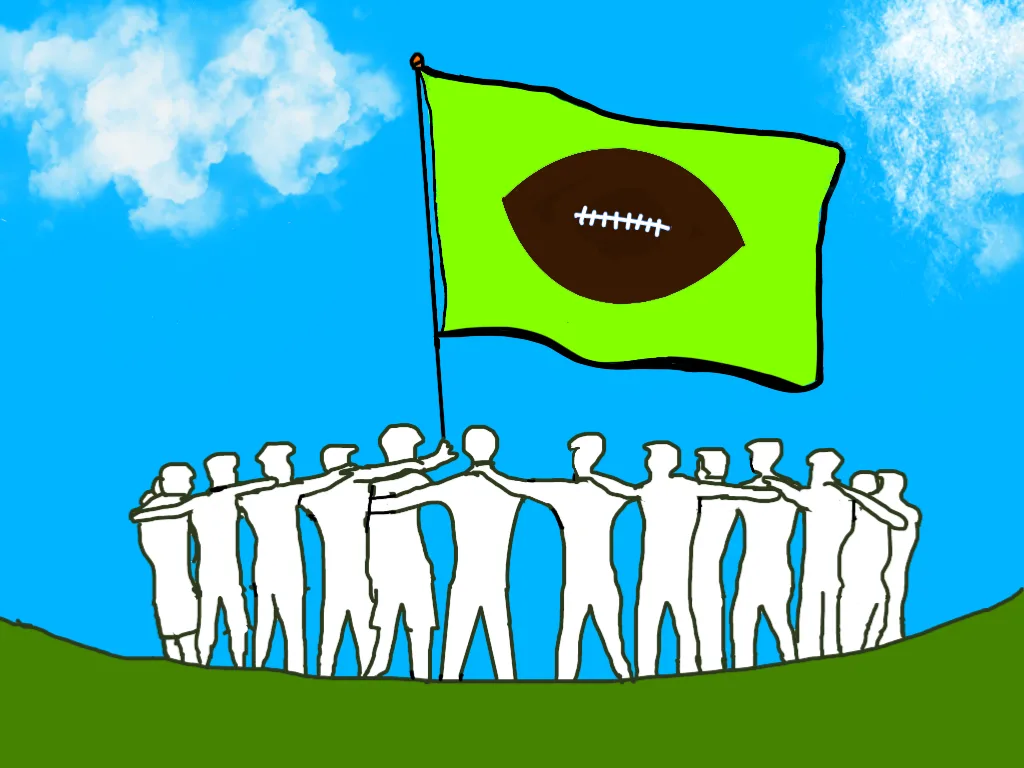On a crisp fall afternoon, the sound of cleats hitting the grass and shouts of encouragement fills the air. It isn’t the scene of a professional football game or even a high-stakes collegiate match—it’s something more intimate: intramural boys flag football.
While the sport itself is a beloved recreational activity, for many, it’s about much more than just chasing after flags. According to the organizers, it’s about building a sense of community and camaraderie in an environment that fosters connection beyond competition.
The organizer behind Stevenson’s intramural flag football program is Ken Latka, the intramural coordinator who has been deeply involved with the sport. Latka wanted to create an opportunity to have fun while balancing competition.
“In 2002, I had the job I have now [coordinating flag football], and I realized that for a school as large as Stevenson—over 4,000 students at the time—there weren’t enough opportunities for kids to be competitive and athletic,” Latka said. “So I wanted to create something that allowed them to have fun and compete with their buddies.”
Initially, the program started small with a few students. But within a few years, the program quickly picked up pace and quadrupled in size.
“We had just six teams in the first year,” Latka said. “By the fourth year, we had 80 teams. It’s smaller now, with 18 teams this year, partly due to the increasing number of other activities and clubs.”
What makes intramural flag football unique at Stevenson is its emphasis on student leadership and peer coaching, according to Latka. Strategy and independent problem-solving are emphasized at games by coordinators.
“The beauty of intramurals is that there’s zero adult coaching,” Latka said. “It’s all about how the kids communicate, problem-solve, and create game plans themselves. I think it’s awesome that they get to figure things out on their own.”
With games lasting just one hour each week and no stringent practice requirements, it’s accessible, according to Latka, even for those with busy schedules. For instance, Latka mentions the games, which are from 9 a.m. to 3 p.m. every Sunday, allow students to squeeze in a fun and active weekend activity without the pressures of traditional sports. For players like Ryan Martin ’26, a member of intramural flag football, the sport is more than just a game—it’s a chance to connect with friends and enjoy some healthy competition. He adds that the bonds formed through the sport extend far beyond the field.
“My most memorable moments were the times we spent outside getting together for dinner after games,” Martin said. “It gave me a chance to get to know everyone personally and build relationships outside the competition.”
Similarly, Latka feels the sport extends beyond its Sunday meets. But Latka also emphasizes the balance between fun and competition at the core of intramural boys flag football at Stevenson: believing that the sport’s lasting appeal comes down to the community it fosters.
“It’s about being with your friends,” Latka said. “It’s about scheming and creating plays that outsmart the other team. Competing brings the fun to a new level.”
Latka states that flag football has become a culture at Stevenson. According to Latka while most teams are smaller friend groups, the sport has a sense of legacy, especially among upperclassmen.
“The seniors and juniors know about flag football on Sundays—it’s part of the culture here,” Latka said.
With simple expectations—wearing a jersey and mouthpiece, cleats, and good sportsmanship—coordinators aim for students to focus on fun. While the games can get competitive, Latka believes the atmosphere remains healthy.
“It’s a different kind of competition,” Latka said. “It’s positive.”
Martin has seen these mannerisms extend beyond the sport of flag football and into his other sports. As a baseball player, Martin has learned the importance of teamwork in sports.
“Flag football has made me an overall better teammate,” Martin said, “it’s taught me that sports are all about your teammates and not just yourself.”
As the program heads into its 21st year, Latka hopes that more students will consider joining in the future. The emphasis on community makes the game fun and rewarding according to both Latka and Martin.
“If kids didn’t get involved this year, they should consider it next year,” Latka said. “It’s so much fun.”
Martin similarly encourages students to join flag football advising them to focus on the big picture. As a long time participant, Martin has learned the most crucial aspect of flag football: fun.
“Just have fun,” Martin said. “Don’t get too caught up in the competitive aspect.”
For students looking for a way to stay active and connect with friends outside the pressures of varsity sports, Stevenson’s intramural flag football provides the perfect opportunity according to Latka. Coordinators aim to have a hands off approach at games.
“We provide the flags, the refs, the balls—you just play and have fun,” Latka said.


